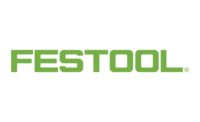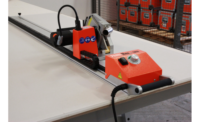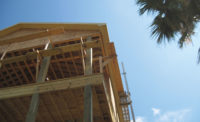Exoskeleton in the Job Site Closet
Level up productivity with tools that enhance well-being and your body.

Professional tradespeople are critical to every aspect of our society—across industries, tradespeople are responsible for developing and maintaining infrastructure, ensuring health and safety standards across construction sites, adopting new technologies and sustainable practices, and so much more. Despite the essential nature of the trades, we see significant challenges hitting the industry that are not being adequately addressed.
In today’s environment, tradespeople face concerns with labor shortages, job security, safety and health, and physical demands, among several other key concerns. Manufacturers seek to support tradespeople with the tools that will help them perform their jobs as efficiently as possible while maintaining a high-quality output. This method to support starts from the very beginning of the product development process, as companies look to understand what pain-points professionals are experiencing and how tools can help them avoid these issues, so they can focus on the job at-hand.

Many trades involve physically demanding work, which can lead to long-term health issues or burnout. This is especially critical for drywall installers, painters, plasterers, and wall and ceiling installers in the industry, who experience the strain of heavy lifting, overhead work, extended standing and repetitive motions that lead to overall fatigue and health concerns.

An Ergonomic Solution for the Job Site
Addressing these concerns requires innovating for walls and ceilings professionals. Tool manufacturers seek to understand these pain-points and what they can develop to reduce long-term negative health impacts in a critical industry. A solution is the ExoActive Exoskeleton, a product designed to support users under the arms and take the effort out of strenuous work on walls or ceilings. It detects user movement while they work and, using the remote, enables seamless adjustments to fit as it’s being worn.
The product is a solution that becomes an extension of the user. By supporting users under the arms, the tool enables professionals to be more efficient on the job while worrying less about the weight on their shoulders. It includes cutting-edge features and a user-centric design to reduce the load on shoulder muscles significantly when sanding drywall, painting, wallpapering or installing on walls and ceilings.
By providing essential support to reduce strain on users’ bodies, the exoskeleton allows users to perform tasks with unmatched comfort and efficiency. In today’s labor market, maximizing efficiency is essential for professional tradespeople, and the tool offers a key element of users’ ability to prosper on the job. Less physical exertion results in greater efficiency, focus and enjoyment over the long-term.

Application Examples
Let’s dive into the use cases for the Exoskeleton in your daily work:
- Installing Drywall on Ceilings: Installing drywall on ceilings requires holding large and heavy sheets of drywall overhead for extended periods. This results in strain on the users’ shoulders, arms and neck. The exoskeleton provides users with upper-body support so it’s easier to lift and hold drywall pieces, reducing fatigue and preventing overexertion during installations.
- Finishing Drywall: Applying compound to drywall seams requires repetitive arm movements, which can lead to shoulder and elbow strain. The tool becomes an extension of the user, supporting them under their arms. It provides each underarm with an added boost of up to 11 pounds.
- Sanding Overhead Drywall: Sanding on ceilings or high walls involves holding power tools above the head, which can cause muscle fatigue and joint pain. The Exoskeleton reduces fatigue when working on ceilings. An electronically controlled pump system and a battery for extra power support the responsive product during tiring, overhead tasks.
- Lifting Heavy Materials: Those working on walls and ceilings often need to lift and position heavy materials, putting significant stress on the back and shoulders. With this type of product, users can quickly set the support level from three predefined working areas for targeted support precisely where needed: from the waist up, from chest height or overhead.
- Downtime Due to Fatigue: Wall and ceiling professionals often need to take frequent breaks due to the physical exertion required for their work. With three predefined working areas and adjustable support levels easily controlled by a turn of the included controller, the tool allows professionals to work seamlessly and comfortably, guaranteeing optimal performance for various tasks.
These use cases highlight how an exoskeleton can support work for drywallers and wall and ceiling professionals by making it less physically taxing, reducing the risk of injury and improving overall productivity.
For added value for entire teams of tradespeople, some exoskeletons are complete with a design that enables easy sharing among multiple users. Users can slide it on like a backpack and quickly adjust it to their height and body type with perfect ergonomics. It includes removable and washable components to enable hygienic sharing. Accessories include a multi-piece support harness complete with a hip belt, straps, back padding and armrest padding that are breathable and washable. Headrests are available in two heights and provide additional neck relief during overhead work, with the higher headrest designed for wall tasks and the shorter version for direct, overhead activities.
Looking for a reprint of this article?
From high-res PDFs to custom plaques, order your copy today!






